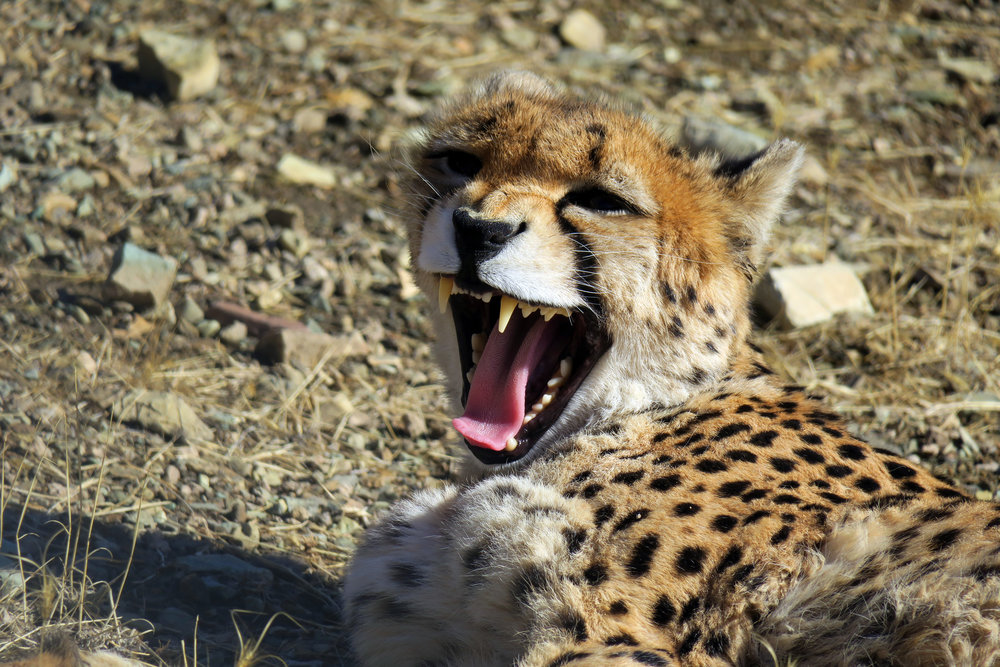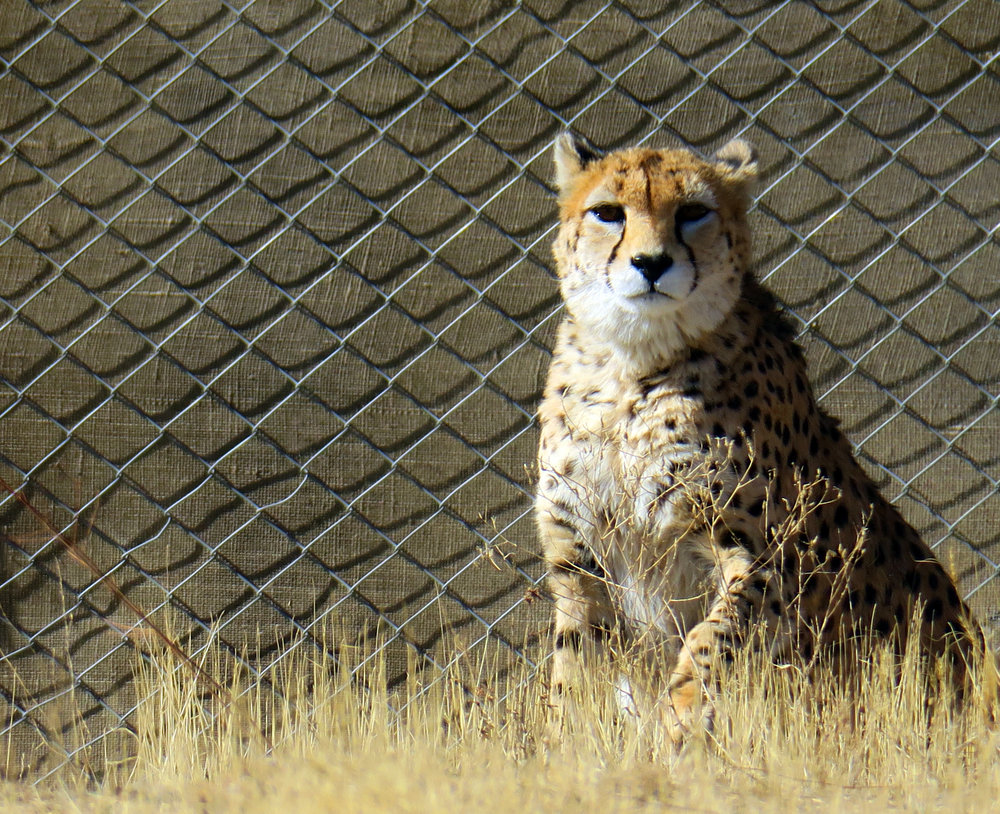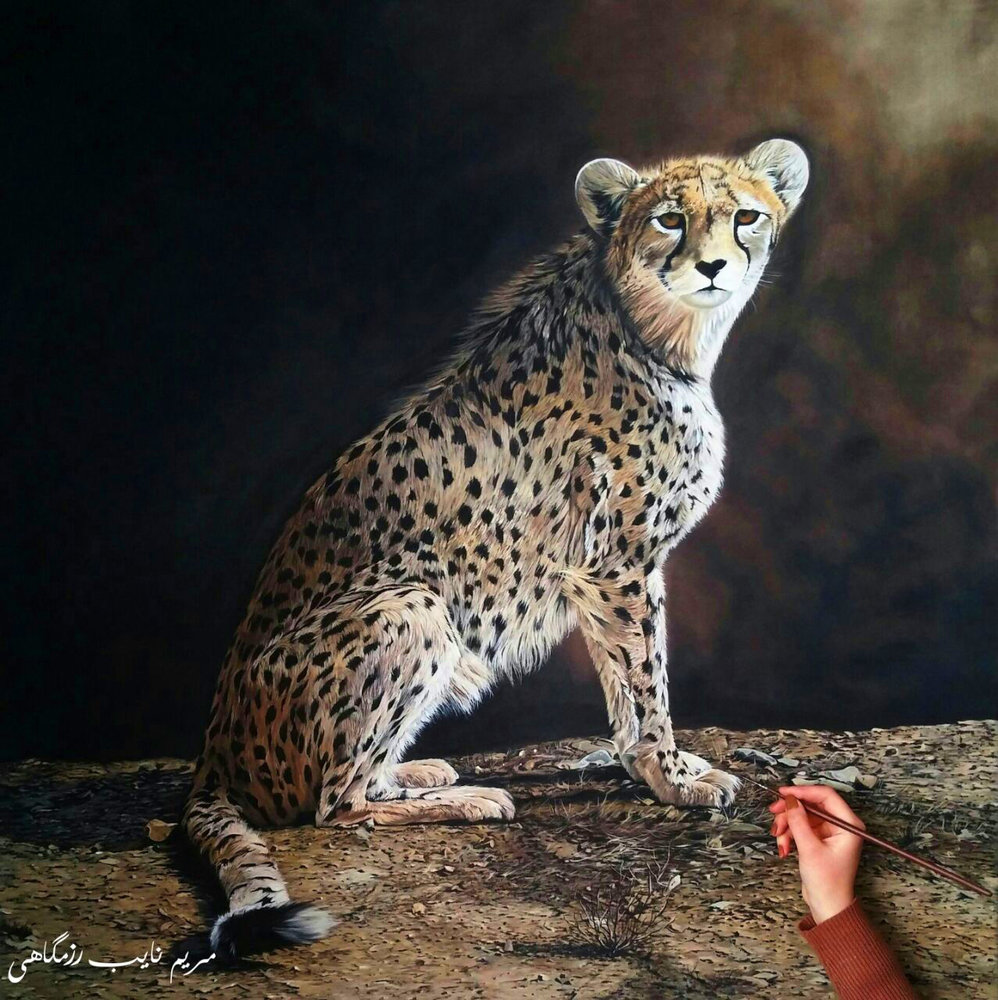Precious wildlife heritage in Tehran

Koushki and Delbar considered are as the only two Asiatic Cheetahs in captivity all around the world. After facility outfit, Kushki had been transferred from Touran National Park, Semnan Province, and Delbar from Miandasht Wildlife Refuge, North Khorasan Province, to Asiatic Cheetah Research and Husbandry Headquarter in late 2014.
Koushki and Delbar considered are as the only two Asiatic Cheetahs in captivity all around the world. After facility outfit, Kushki had been transferred from Touran National Park, Semnan Province, and Delbar from Miandasht Wildlife Refuge, North Khorasan Province, to Asiatic Cheetah Research and Husbandry Headquarter in late 2014.
Asiatic Cheetah Research and Husbandry Headquarter (ACRHH) is located in Pardisan Park, Tehran Province, and it is the utmost importance site for proper cheetah management and health care. Having too many consults leads to electing Pardisan Park over other options such as Kavir National Park, Khojir National Park or even other existing sites. The basic facility design of this site includes 6 separated spaces for maintenance of these two cheetahs and also any other Asiatic Cheetahs that perhaps lost the chance of living in its natural habitat. Threats such as habitat destruction considered as the main problem in which natural habitat is rendered unable to support cheetahs not just now but also in the foreseeable future.

Koushki, a male Asiatic cheetah, that is living in captivity in Pardisan Park, Tehran (photo by Farnaz Heidari).
Conservation
Asiatic Cheetah Research and Husbandry Headquarters’ short-term goal is to make cheetahs self-sustaining in captivity. But the long-term goal is to improve captive cheetahs' breeding. The site is designed meeting the needs of more than two cheetahs and that’s why many assumptions such as caring hand-reared cubs from cheetah breeding facilities and interaction with other cheetahs are taken into consideration. The site has six separate spaces, two main spaces which are called introduction spaces.
Both cheetahs are spending most of their time in the introduction parts to mark territories etc. Vision limitations are taken into account in all spaces to increase better chances for smelling. Sensing is an important behavior in cheetahs and that’s why it is considered in Asiatic Cheetah Research and Husbandry Headquarter.
Modelling the natural characteristics of their habitats is really important and it is also one of the predominant hubs. The chance of captive breeding here in Asiatic Cheetah Research and Husbandry Headquarter is low because only very few breeding programs have managed to mimic success. But here is still hope.

Painting of Koushki by Maryam Nayeb Razmegahy
The importance of ACRHH
Till now many researches has been done about African Cheetahs and these studies showed that cheetah reproduction in captivity is difficult. Asiatic cheetah has many behavioral differences with Africans and some of these refer to weather conditions and more importantly the existence of 4 distinguished seasons in Asiatic Cheetah habitats. All of these may cause differences in sexual maturity, gestation period, and so on. There was a growing body of evidence that confirmed Felidae estrus cycle of Delbar is quite different with African individuals. The female individual (Delbar) had signs of Felidae estrus cycle periodically since March until June.
As the Smithsonian Conservation Biology Institute plays a leadership role in the management of the North American cheetah population so Iranian scientists used their data as an index especially for breeding process. Their information revealed that the success percentage is under 10% with more than 1 couple and with more than 10 couple, the success percentage increased to 30%. Be noted that there has never been any similar study about subspecies of Asiatic Cheetah and please keep in mind that the reproduction of these cheetahs cannot solve the challenge of extinction for Asiatic cheetahs. Iranian scientists are just trying to upgrade knowledge and nothing more.
Asiatic Cheetah as a subspecies experienced bottleneck or sharp reduction in the size of population and when a species is driven to extinction, it usually refers to combination of factors acting simultaneously or consecutively. Habitat loss and fragmentation among specific group of threats such as over grazing and presence of livestock guardian dogs considered as main threats for Asiatic Cheetah in Iran.
Unfortunately road-kills and also feral and sheepdogs confirmed as their main important threats here in Iran. On the other hand it is difficult to unambiguously identify the number of Asiatic Cheetah population in the country because estimating animal density by using camera traps contains many errors due to low detectability. As reduction of genetic variation has an important effect on survival of Asiatic cheetah Iranian scientists are also planning to do some genetic analysis here in Asiatic Cheetah Research and Husbandry Headquarter due to the growing body of evidence of genetic depletion which is correlated with problems such as elevated juvenile mortality, extreme abnormalities in sperm development, difficulties of captive breeding, and increased vulnerability to infectious disease outbreaks.
Comments